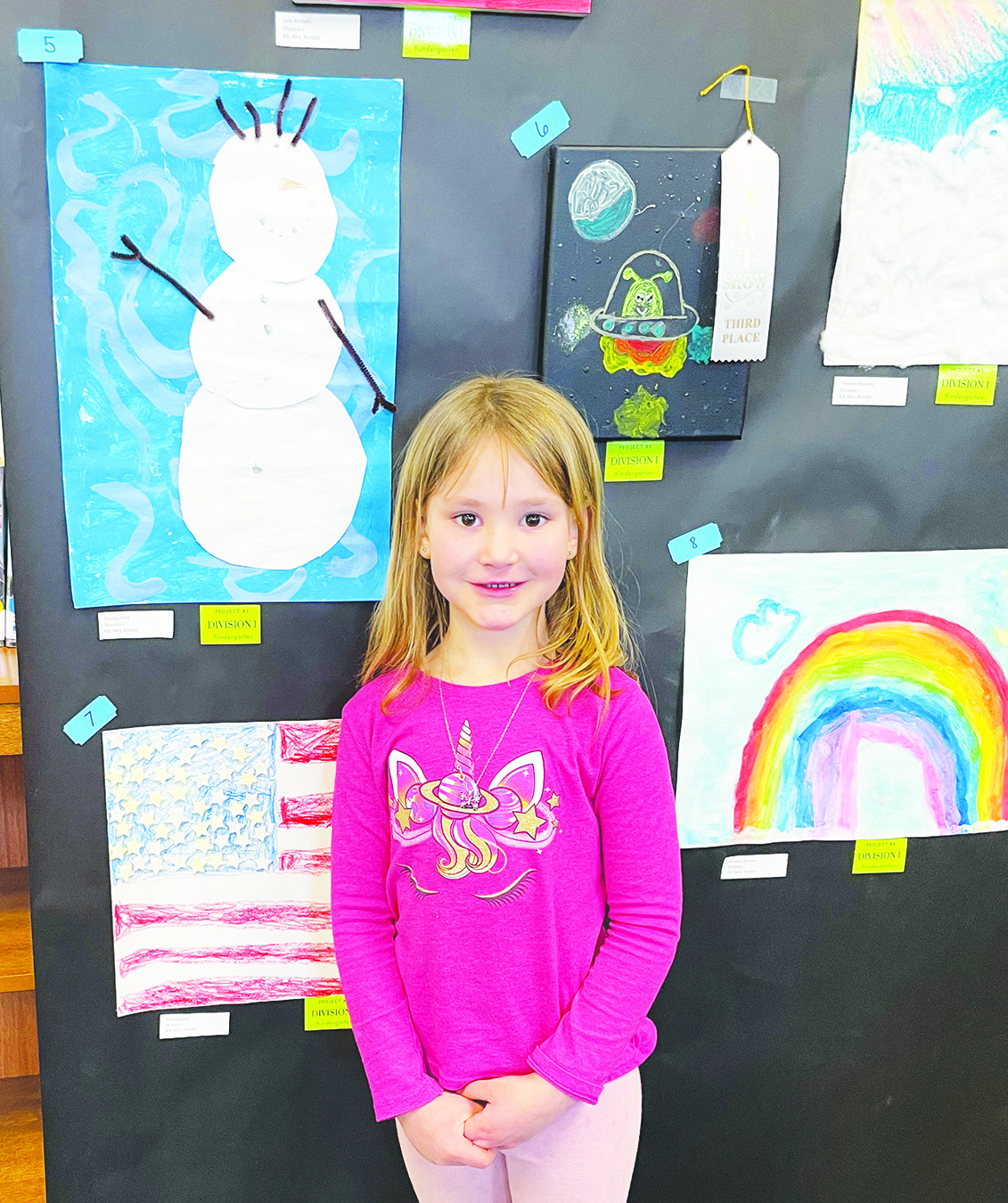
By Stephen Smoot
Last week, the Franklin Elementary School PTO decked the shelves, walls, and tables of the library with art. Students of all ages brought a wide variety of art for judging, from realism to abstract, and even three dimensional pieces creatively made from common household objects.
“One of the reasons it was started was because there’s a lot of focus on academics and sports,” says Tanya Wehrle, PTO member and one of the show organizers. She added that “we want to give all kids an opportunity.”
FES’s first art show took place in 2020, just before the arrival in the United States of the pandemic. Last year was skipped due to continuing pandemic concerns, but in 2023 it was deemed the show must go on.
Art shows do more than give children a chance to draw, paint, or sculpt. As Jess Felici from the PTO explains, “This recognizes the need for promoting STEAM (science, technology, engineering, art, and math) but, unfortunately you don’t always find the A in steam.”
According to the Michigan State University Extension Service, art helps in four main areas of development.
In the youngest of children, art helps in developing fine motor skills. Experts say that grasping and using crayons and other art supplies develop hand muscles, as well as coordination. Additionally, they help to provide the fundamentals of problem solving and cause and effect. Art also helps children to learn how to make and follow a mental plan, as well as the best times to deviate from it and adapt to changing conditions.
Older children’s art experience supplements teaching in both mathematics and language arts. They must work with different sizes and shapes while also using numbers, geometry, and spatial reasoning. In sharing and describing their compositions, students practice articulation. “They develop skills not built into the curriculum,” says Felici.
As Wehrle adds, “Art helps them to express themselves. It helps the brain to develop the kinds of connections that make it more active and dynamic.” She also stated that “kids don’t always have the words to express things, but they do through art.”
Art therapy has developed into an important clinical tool with some children. As the American Art Therapy Association explains, “Art therapy is used to improve cognitive and sensorimotor functions, foster self-esteem and self-awareness, cultivate emotional resilience, promote insight, enhance social skills, reduce and resolve conflicts and distress.”
Even more important than the educational reasons, Wehrle said, “they’ve been so excited.” Students got a chance to vote for the winners, but generally “they’d have their tickets and vote for their friends. The kids got so excited for their friends.”
Though the school does not have its own art teacher, the administration strongly backed the show. “Miss Whitecotton asked us to have February be an art month. Art was encouraged throughout the school.” Wehrle said.
Parents also praised the effort. “It’s important for children to have access to artistic outlets,” says Ammie Ruddle, whose child participated. She added that “this allows children to explore and express their creative abilities.”

